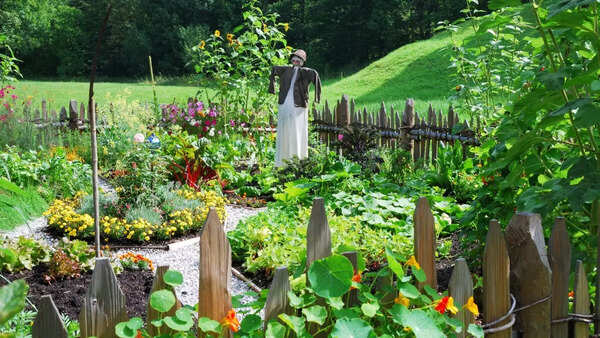The monsoon season breathes life into the earth, replenishing water sources and providing respite from the intense summer heat. For gardeners, it's nature's signal to cultivate the land, sow seeds, and nurture vibrant growth. Abundant rainfall, softened soil, and moderate temperatures combine to create ideal conditions for establishing a thriving kitchen garden.
Whether you're an experienced gardener or just starting out, the monsoon offers an unparalleled opportunity to grow your own food and experience the rewards of gardening. As the rains nourish the soil, your garden will burst forth with lush greenery, crisp vegetables, and a spectrum of colorful blooms. It's a chance to reconnect with nature, get your hands dirty, and relish the satisfaction of nurturing life from seed to harvest.

The monsoon season offers unique advantages for cultivating a kitchen garden:
Here's how to make the most of the rainy season for your gardening endeavors:

Monsoon rains naturally soften compacted soil, simplifying tilling and aeration. To enrich the soil's fertility, mix in organic compost, farmyard manure, or leaf mold. These materials decompose rapidly in the moist environment, releasing essential nutrients such as nitrogen, phosphorus, and potassium.
For added benefits, consider incorporating natural additives like neem cake or bone meal to enhance nutrition and pest resistance. Before planting, assess soil drainage by observing how quickly water absorbs into a small hole – it should drain within 2-4 hours. For clay-heavy soils, incorporate cocopeat or coarse sand to improve aeration and prevent waterlogging, which are critical for healthy root development and a flourishing kitchen garden.
Consider these options for your monsoon kitchen garden:
Newer articles
Older articles
 Gavaskar Calls for Kuldeep Yadav's Inclusion in Second Test Amid Bumrah Fitness Concerns, Cites Edgbaston Spin Advantage
Gavaskar Calls for Kuldeep Yadav's Inclusion in Second Test Amid Bumrah Fitness Concerns, Cites Edgbaston Spin Advantage
 Indian Astronaut Shukla Arrives at ISS, Ushering in New Era for Space Program
OR
India Celebrates as Shukla Reaches ISS, Advancing Ambitious Space Goals
Indian Astronaut Shukla Arrives at ISS, Ushering in New Era for Space Program
OR
India Celebrates as Shukla Reaches ISS, Advancing Ambitious Space Goals
 Rishabh Pant Revolutionizing Cricket, Says Greg Chappell
Rishabh Pant Revolutionizing Cricket, Says Greg Chappell
 Toxic Workplace Warning Signs: Spot the Red Flags Early
Toxic Workplace Warning Signs: Spot the Red Flags Early
 Global Immunization Crisis: Millions of Children at Risk as Vaccine Coverage Lags, Study Reveals
Global Immunization Crisis: Millions of Children at Risk as Vaccine Coverage Lags, Study Reveals
 Moto G54 Price Slashed in India: Check Out the Discounted Rates and Specs
Moto G54 Price Slashed in India: Check Out the Discounted Rates and Specs
 Indian Cricket Star Mukesh Kumar and Wife Divya Singh Announce the Arrival of Baby Boy
Indian Cricket Star Mukesh Kumar and Wife Divya Singh Announce the Arrival of Baby Boy
 IRCTC Launches AI Chatbot 'AskDisha 2.0' to Revolutionize Train Ticket Booking and Customer Service
IRCTC Launches AI Chatbot 'AskDisha 2.0' to Revolutionize Train Ticket Booking and Customer Service
 Cummins Lauds Australia's Dominant Start to WTC Campaign After West Indies Series Win
Cummins Lauds Australia's Dominant Start to WTC Campaign After West Indies Series Win
 Smith Targets Test Return After Innovative Baseball Cage Rehab in New York
Smith Targets Test Return After Innovative Baseball Cage Rehab in New York